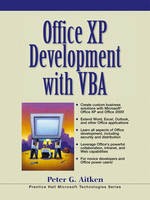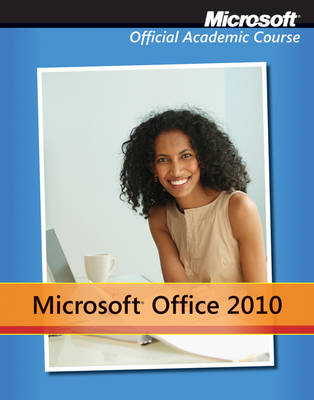
Office XP Development with VBA
Prentice Hall (Verlag)
978-0-13-065417-5 (ISBN)
- Titel ist leider vergriffen;
keine Neuauflage - Artikel merken
The Microsoft Office applications suite provides a powerful object framework and a programming language (Visual Basic for Applications) that permit the developer to create custom business solutions utilizing the capabilities of one or more Office programs. Office is a popular development tool and its power and flexibility have made it the preferred approach for many application scenarios. The current book provides beginning and intermediate level developers with the information they need about the Office object model and VBA language in order to create custom solutions.
PETER G. AITKEN is a well-known author specializing in computer programming,applications, and hardware. His 30+ books include Windows Script Host (Prentice Hall PTR), Teach Yourself C in 21 Days, and Visual Basic 6 Programming Blue Book. A long-time faculty member at Duke University, he is the proprietor of PGA Consulting, providing custom software development and technical writing for industry and academia.
(NOTE: All chapters conclude with Summing Up.)
Preface.
I. INTROUDCTION TO OFFICE DEVELOPMENT.
1. Why Develop with Office VBA?
Advantages of Office Development. Software Components. Objects and Components. The Office XP Suite. What's New in Office.
2. The Basics of Office Development.
Objects and Automation. The Office Object Model. Designing Your Custom Application. A Simple Office Application.
3. Visual Basic for Applications—the Fundamentals.
Parts of the VBA Editor. Working with Code. Importing and Exporting Modules. Writing Good Code. Adding References. Securing your Code.
4. Working with Office Objects.
Objects and References. Collections. Finding Objects in the Object Hierarchy. Early versus Late Binding. The Object Browser. Objects and Events.
II. THE OFFICE COMPONENTS.
5. Using Word Components.
The Word Object Model. The Document Object. The Selection Object. The Range Object. Using Bookmarks. Finding and Replacing Text. The Application Object. The View Object. Events in Word.
6. Using Excel Components.
Excel Overview. The Excel Object Model. The Workbook Object. The Worksheet Object. Range Offsets, Unions, and Intersections. Using the Cells Property. Naming Ranges. Manipulating Worksheet Contents. Working with Charts. The Application Object. Events in Excel.
7. Using Data Access Components.
Access Fundamentals. Data Access Technologies. The Access Object Model. Working with Forms and Reports. Working with Data Access Pages. Creating Data Access Pages. Using Data Access Pages. Securing Databases. Database Passwords. Active Data Objects. RecordSets.
8. Using PowerPoint Components.
The Presentation Object. The Slide Object. Working With Text on Shapes. The PowerPoint Application Object.
9. Using FrontPage Components.
FrontPage Overview. The Web Object. Working with Folders. Working with Web Pages. Working with Web Pages. Working with Page Windows. Dynamic HTML—Should You Use It?
10. Using Outlook Components.
Outlook Overview. The Application and NameSpace Objects. Manipulating Folders and Items. Working with Mail Messages. VBA in Outlook. Events in Outlook. Programming the Calendar.
11. Using the Shared Office Components.
Shared Components Overview. The Office Assistant. Displaying Controls in a Balloon. Using Modeless Balloons. The FileDialog Object. The FileSearch Object. Command Bars. Document Properties.
III. THE VBA LANGUAGE.
12. Data Storage and Operators.
Basic VBA Syntax. Storing Program Data. Arrays. Static Arrays. Dynamic Arrays. Operators.
13. Conditional and Loop Statements.
Conditional Statements. Loop Statements. The GoTo Statement.
14. Writing Procedures.
Types of Procedures. Defining a Procedure. Passing Arguments. Variables in Procedures. Calling a Procedure. Named Arguments. Procedure Scope. Planning and Storing Procedures.
15. Working with Strings.
String-Processing Summary.
16. Working with Dates and Times.
The Date Data Type. Creating Dates and Times. Adding and Subtracting Dates and Times. Getting Date and Time Information. Formatting Dates and Times.
17. Working with Files.
Overview. File Access. Working with Text Files. File Management. FSO Methods. The Drive Object. The Folder Object. The File Object.
18. Creating Custom Classes and Objects.
Why Create Classes? Class Module Fundamentals. Creating Class Properties. Creating Class Methods. Class Events. A Class Demonstration.
19. Creating User Forms.
Creating a User Form. What Controls Are Available? User Form Code and Event Procedures. Displaying, Using, and Hiding User Forms. A User Form Demonstration.
IV. OTHER OFFICE DEVELOPMENT TOOLS.
20. VBA Error Handling.
Writing Solid Code. Runtime Errors. The Err Object. Handling an Error. Resuming Executing after an Error. On Error Resume Next. ADO Errors. Raising Errors. Class Module Errors. Returning Errors from Functions. Testing your Error-Handling Code. Error Logging. Dealing with Unanticipated Errors.
21. Debugging, Deploying, and Supporting Your Application.
Debugging Your Applications. Working with Breakpoints. Using Watches. The Locals Window. Controlling Program Executing. Deploying Your Application. Supporting an Application with Online Help.
22. Using the Windows API and Registry.
The Windows API. Strings and API Procedures. Using Callbacks. The Windows Registry.
23. Office Technologies for the Web.
Web Components Overview. Using the Web Components. Using the Spreadsheet Control. Using the PivotTable Control. Using the Chart Control. Using the DataSource Control.
V. PUTTING IT ALL TO WORK.
24. Web Publishing of a MultiAuthor Compound Document.
The Scenario. Planning. The Main Application.
25. Numeric Processing and Graphing.
The Scenario. Planning. Creating the Workbook. Planning the Code. Potential Errors and Bugs. The Main Procedure. The Secondary Procedures.
26. The Scenario. Report Generation Basics. Structure of a Report. Adding Report Elements. A Demonstration.
Appendix: KeyCode Constants and Values.
Index.
| Erscheint lt. Verlag | 26.9.2001 |
|---|---|
| Verlagsort | Upper Saddle River |
| Sprache | englisch |
| Maße | 177 x 235 mm |
| Gewicht | 1018 g |
| Themenwelt | Informatik ► Office Programme ► Office |
| Wirtschaft ► Betriebswirtschaft / Management ► Allgemeines / Lexika | |
| ISBN-10 | 0-13-065417-5 / 0130654175 |
| ISBN-13 | 978-0-13-065417-5 / 9780130654175 |
| Zustand | Neuware |
| Informationen gemäß Produktsicherheitsverordnung (GPSR) | |
| Haben Sie eine Frage zum Produkt? |
aus dem Bereich


